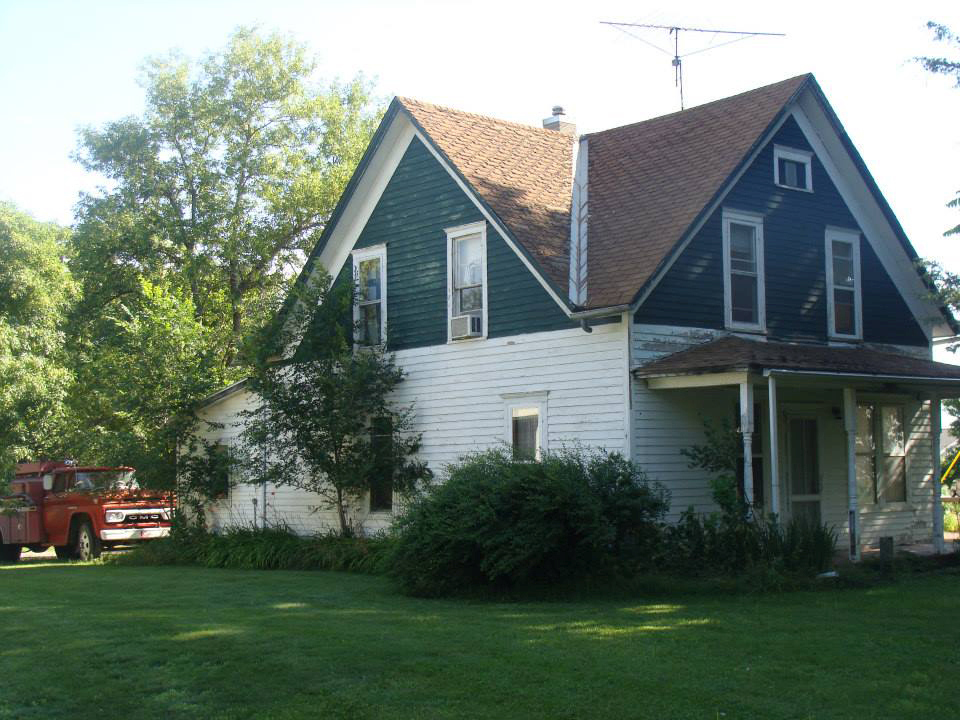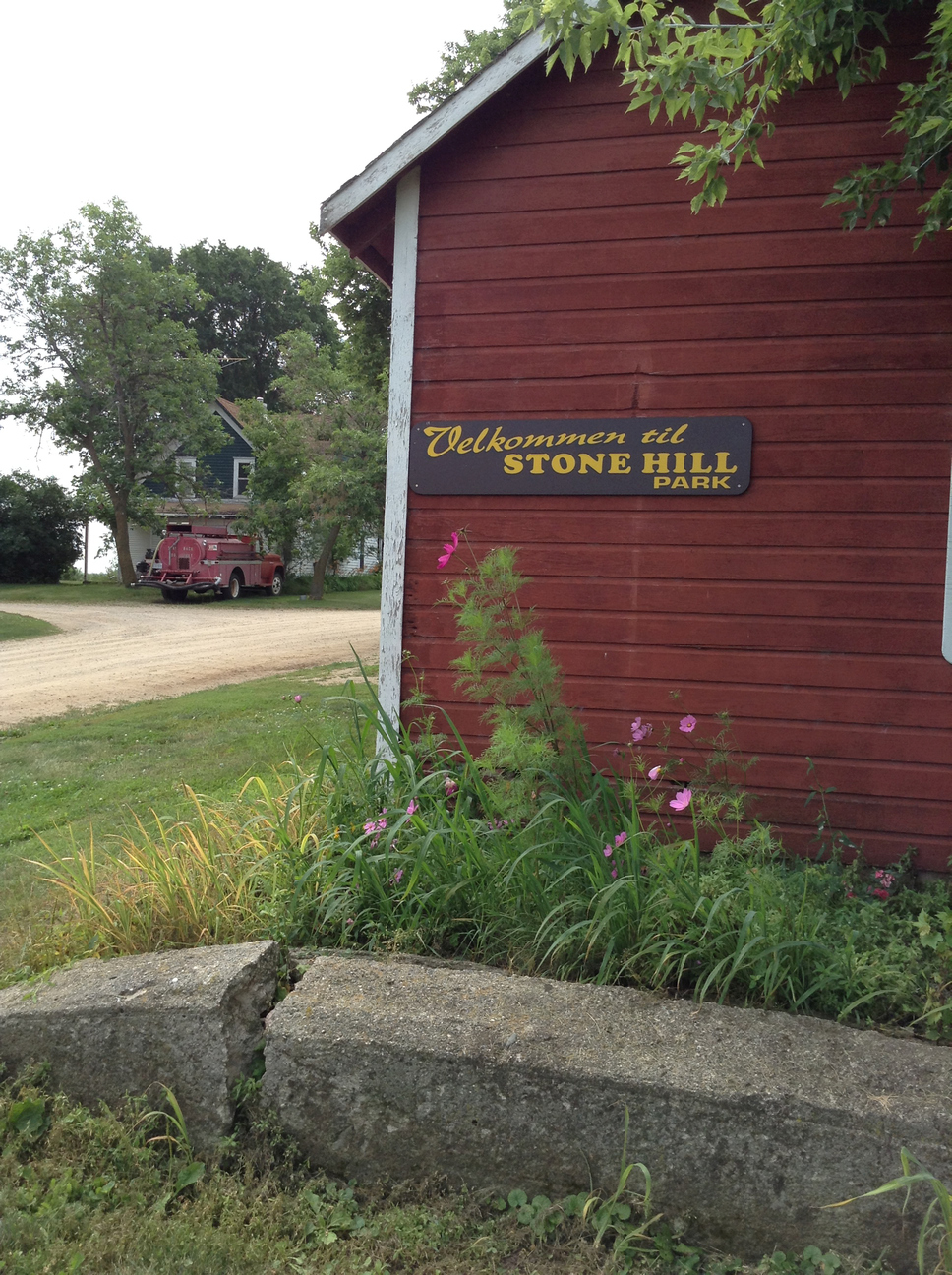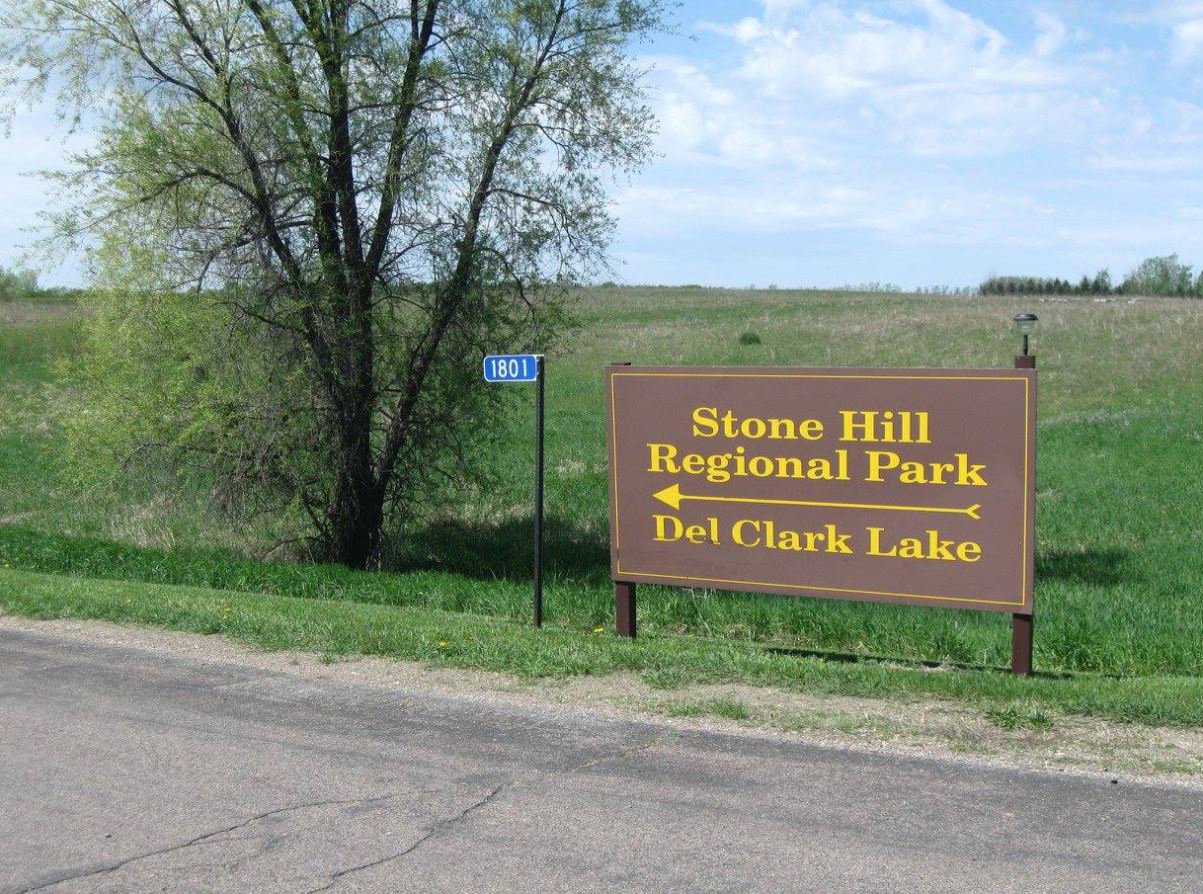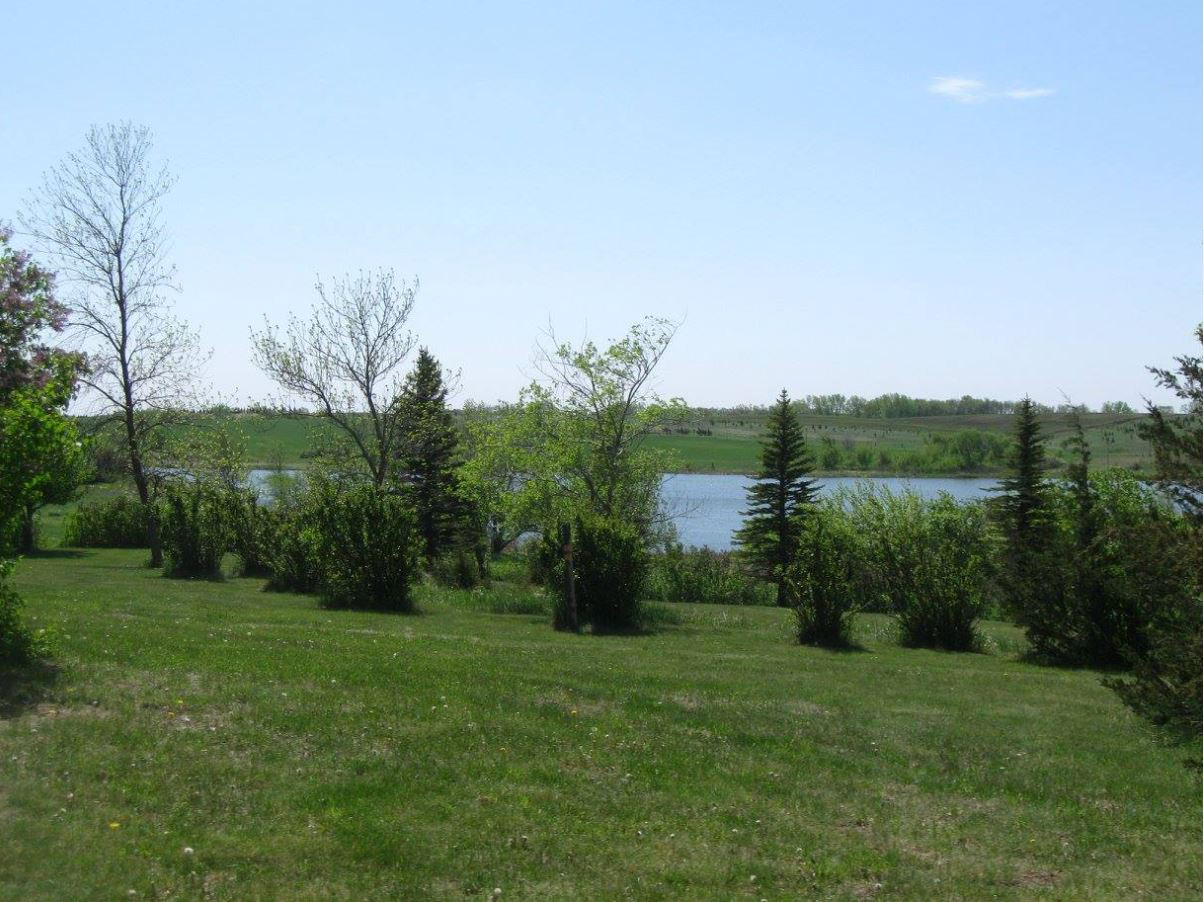Rays of sun stretch through the upstairs bedroom, sharp chirps from undetected crickets, fading pop-pop-pop-pop of tractor cylinders, bold aromas of coffee, and the anticipated cock-a-doodle-doo all resonate so clearly. The sensuous surroundings are forever embedded within me. To my extended family the farm was just home, but to me it was a special place of new adventure with each visit.
The road trip to get there, 165 miles southwest of the Twin Cities, traveled along US Highways 212 and 75. The open, rolling, farm fields along the drive were sparsely identified by silos set in tree-surrounded farms, and segmented by many small farming community towns, some only a few blocks long. A few rural communities had their own grain mill, while others featured a specific landmark the World’s Largest Ear of Corn, for instance in Olivia yet they all supported a restaurant and gas station. My grandparents’ 200 acre farm sat on the southwest edge of the second largest community of Yellow Medicine County, Canby, which nestled below Buffalo Ridge on Minnesota’s prairie.
The roads turned to loose gravel. As the vehicle rounded the final corner to summit the last stretch, a billowing plume of dust, rising behind it, announced the arrival of visitors. There, built atop a hill just eight miles from the South Dakota border, stood the white two-story farmhouse dressed with green shakes and windows on all sides. The gravel driveway separated the hardwood grove from the house, wrapping into the center of the farmyard, surrounded with cut green grass and buildings. A short concrete sidewalk alongside the well pump and cistern led up to the outdoor porch where Skeeter, the family dog, bedded down.
With a rock foundation, dirt-floor cellar, a secret hall on the main floor behind the kitchen and living room which led to the main bedroom and only bathroom, a closed-door staircase off the kitchen that headed up to three more oversized bedrooms, the house took on an imposing appearance. During the fall and winter, heat rose into the upstairs through an open square metal grate in the kitchen ceiling, along with the stories told by adults sitting around the yellow kitchen table below it. Trying to sneak out of the squeaky rod iron beds to lay by the floor vent and watch below without being caught was an evening event. Resting at the foot of each bed were heavy handmade multi-colored quilts assembled from remnants of worn clothing and with stories behind each piece. The view from the upstairs bedroom windows encompassed the grove, clustered yard and all of the buildings: barn, corn crib, pigpen, granary, garage as well as the chicken coop. The view through the east-facing windows covered a great distance from the stone arch bridge over Canby Creek, which flowed through the south pastures, to varying acres of planted fields waving in the prairie wind. Mouse traps were hidden behind living room furniture and discrete spots throughout the house and outbuildings. Against Grandma’s wishes, traps were checked by us kids each morning to see who could find the most that were occupied. The wall-mounted country phone was a multi-party line with a distinct ring for each specific household. Cousins performed, using the secret hall as a backstage area, annual holiday skits. No one was too old to participate. Hymns and songs played on the piano filled the air when family gathered for a group dinner. I wish I could say I was there more often; however, my visits were mostly limited to holidays and summer vacation. When I was there, I insisted on many different farm chores. I wanted to be a part of this unfamiliar lifestyle of living on a farm.

Photo Courtesy of Michele Brennhofer
The chores included feeding livestock, milking cows, throwing kitchen scraps to the pigs, pitching manure into the barn floor gutters, and chasing cats over the mountains of bails in the hayloft went on without change. The best year-round job of all was collecting eggs from the rows of straw filled nest boxes in the coop and cleaning them for sale.
I wouldn’t have missed this last part of the process for the world. Sitting on the boy-stool next to the head farmer, Grandpa, the lesson began. I was fascinated with the electric platform, agitating left and right, swirling the water around the eggs to remove chicken debris without cracking the shells. One wipe with a sackcloth towel added the finishing touch before closing them into cartons.
As seasons changed, the farm and prairie took on a different appearance. Snow-packed two-lane highways with deep ditches, the roadbeds elevated from drifting snow, gave evidence of the strength of wind gusts across the barren prairie. The fields and pastures, lifeless to new growth, became entertainment encompassing this house. Toboggans and multi-person sleds left memorable indentations on the hills behind the barn from races, crashes, and the longest runs. With enough snow depth, my uncle, a large-animal veterinarian, would bring out his clinic snowmobiles. Adventures through the uneven south pasture led to the creek banks, which to me resembled a gorge, holding an unfrozen stream below. The adrenaline rush from clinging to the driver, hoping to reach the peak of the steep inclines without the snowmobile rolling down was rewarded with a deep breath. Families of snowmen wearing homemade scarves, hats and mittens, with one occasionally smoking pa’s old corncob pipe, would live in the side yard until the sun took them away.
As spring approached, farm animals began emerging into the daytime warmth of the sun. The birth of new calves, lambs, piglets, and chicks were daily announcements reported from my oldest uncle’s nearby dairy farm. The partially frozen ground had isolated soggy areas amid new growth of green popping up throughout the farmyard. Identifying the sprouting rhubarb knobs poking through the garden’s earth sent my taste buds yearning for fresh, home-cooked “hairy sauce”, my grandma’s classic rhubarb sauce recipe. Unthawing farmyard smells lingered in the air as though no breeze was noted for miles. However, even with tractors cultivating the remains from emptying the forty-bushel manure spreader, this permeating scent eventually subsided.
Outlining the yard’s south edge of the garden plot stood rows of blooming crabapple, plum, and apple trees. The fragrant aroma of blossom-covered trees mixed with the smell of freshly upturned soil, igniting the urge to stay outside all day. Each year, sunshine and warmth meant the return of my youngest aunt from her west coast residence. Her visit wasn’t considered to be complete before a spring thunderstorm put on its performance of dancing, outstretched lightning bolts and claps of bone rattling thunder during the night hours. A beautiful display of power against the darkness of the skyline. It was a wakeup call for everyone who was home. Storms of this magnitude happened often. However, one horrific storm brought with it a lightning strike known for setting the family television blazing. Grandma, though advanced in age, found a moment of unimaginable strength, carried the flaming television through the house, out the porch door and disposed onto the short sidewalk, leaving a charred memorable impression of courage.
As the rains nourished the ground, the work of preparing the fields came to its completion. Sowing of the fields, with crop placement shifting from year to year, forecasted a higher yield and replenishment of soil nutrients, as long as Mother Nature cooperated. Through the seasons of planting, growing, and harvesting, there was always an ongoing fight against the ever-belligerent enemy: rocks. They were as ruthless as weeds: always plentiful, and with apparent powers of spontaneous regeneration. Picking rocks and weeding went hand-in-hand, and impressive rock piles rose in random places, out of production’s way. The exposed scattered mounds of picked rocks were soon hidden in the fields amidst the tall free-growing weeds and grasses.

The view from the barn toward the house. Photo courtesy of Michele Brennhofer
Crop growth was measured by body height, with conventional farmers’ wisdom saying the corn needed to be knee high by the Fourth of July if it was to make for a good harvest that fall. As crops in the fields took visible shape, so did the homes gardens, filled with rainbow arrays of marigolds, zinnias, cosmos, poppies, daylilies, roses, and bachelor buttons. Hollyhocks took their place against many of the buildings’ concrete edges, using the wall for protection and support of their lavish flowers. I methodically selected several bright alley orchids to create the most beautiful summer day-dolls. The upside-down fully opened flower blossom made for a flowing ballroom gown, while the peeled-back tightly wound bud provided a colorfully dressed doll head. The dolls floated across bird-bath water as if dancing to music as the cooling breeze wrapped around the screen porch. The vegetable garden centered amid the flower beds grew mounds of cucumbers, tomatoes, peas, bush beans, and some berries. They were abundant enough to serve fresh, and were later preserved to last through the year.
In front of the garden stood a mammoth oak tree. A wood disk-swing hung suspended from a branch that was as big around as a light pole. It was the best seat outside on a steamy hot day, for it could be pushed to swing you almost horizontal to the ground, or spun to bring on dizziness.

Hollyhock doll. Photo Courtesy of Michele Brennhofer
In late summer, some livestock was selected for the market while chickens were processed right on the farm. The chickens were precisely selected, slaughtered, and plucked before scalded. I was not always present for this annual occurrence. Yet, I have vivid memories of a year gone awry. During the preparation, the party line rang and I charged through the unlocked screen porch door only to trip, submerging one arm in the scalding bath of water for the chickens. I arrived to the town doctor with it wrapped in ice cubes and towels. Burnt? Yes. Scarred? No. Don’t remember what ever happened to the selected chickens.
Cooler evenings came to the prairie. Field work took long hours, as crops began lining up to be harvested. Off in the far distance you could hear the deep croaks of frogs and the snapping of grasshopper legs as they popped out of the tall grass. Walking away from the house, out through the side field, heading to the corn crib, Grandma always looked over her shoulder to see that she was out of Grandpa’s sight before taking a prime opportunity to cut loose. She would roll up her slacks, and we would run to feel the cool breeze. It was always fun on the farm. The weathered slatted corn crib resembled a covered bridge. Its walls were beginning to fill with ears of corn and would eventually be compacted and firmly filled to the top. The crops were coming in and the fields were being put to rest. The harvest was processed or hauled away by semi-trucks. The granary door was closed and filled to capacity with overflow hitting the gravel driveway. Horned cattle were directed into a squeeze shoot to be debudded or dehorned. The discarded horns were preserved into useful items. Wood shelves down in the root cellar gained weight from a variety of Mason-jarred preserved vegetables and fruits. Sagging fruit trees and the overcrowded garden both showed varying colors in their tired leaves. Games of hide-and-seek often lasted for hours, with boundaries being the whole farmyard and all buildings off-limits. The arguing began when someone would hide under the arch of the corn crib insisting “under” is not “in”. As years faded away, the farm animals appeared to get smaller, but memories were still stacking up.

The entrance to the park. Photo courtesy of Michele Brennhofer
After twenty years, I looked on as my grandparents decided to sell their farm. It was hard to imagine not visiting this memorable prairie farm. Walks in the fields, climbing in the hayloft, and the egg chore, were soon to be final memories. Many locals recognized me as a grandchild. My face had become familiar to family friends, business owners, and parishioners. We watched the town celebrate its centennial in 1978, with senior citizens dressed in authentic pioneer clothing primarily made from patterns by hand, and brilliant light shows in the sky. But 1985 was marked by the auction of family belongings, as my grandparents scaled back to a home on Walnut Avenue North in Canby, Minnesota.

Del Clarke Lake. Photo Courtesy of Michele Brennhofer
These local events, people, and daily activities had brought the prairies to life for me. Things were changing and people were moving on. The trips to the farm with my grandparents’ oldest daughter, my Mom, changed direction. As the buildings were emptied, it was announced that the property was sold to the Watershed Project. The farm buildings were to be preserved if possible, and the majority of the land would revert to the state it had been in before ever being cultivated. The Canby Creek was expanded at the old dirt road curve, right where the stone arch bridge crossed. Del Clarke Lake, the largest man-made lake in Minnesota, was constructed at the base of the big hill where the farmhouse had once stood. Plots of the land are still owned by some of my uncles, with the remaining portion of the land a park and reserve. My grandparents had the chance to attend the dedication of Del Clarke Lake, the opening of the new park, and were honored to name the park: Stone Hill Regional Park. Named by my grandparents, Stanton and Frances Stone, it is currently in beautiful condition, and will always be there to visit.
The farmland and prairies of Southwestern Minnesota are woven into my metropolitan upbringings and provided lifetime, unforgettable memories. The boy-stool now located in my family’s kitchen, along with other memorable visual items, holds deep memories. I now have a flock of five chickens, so the egg-gathering chore continues on. My memories have
become a link from my heart to my heritage.


